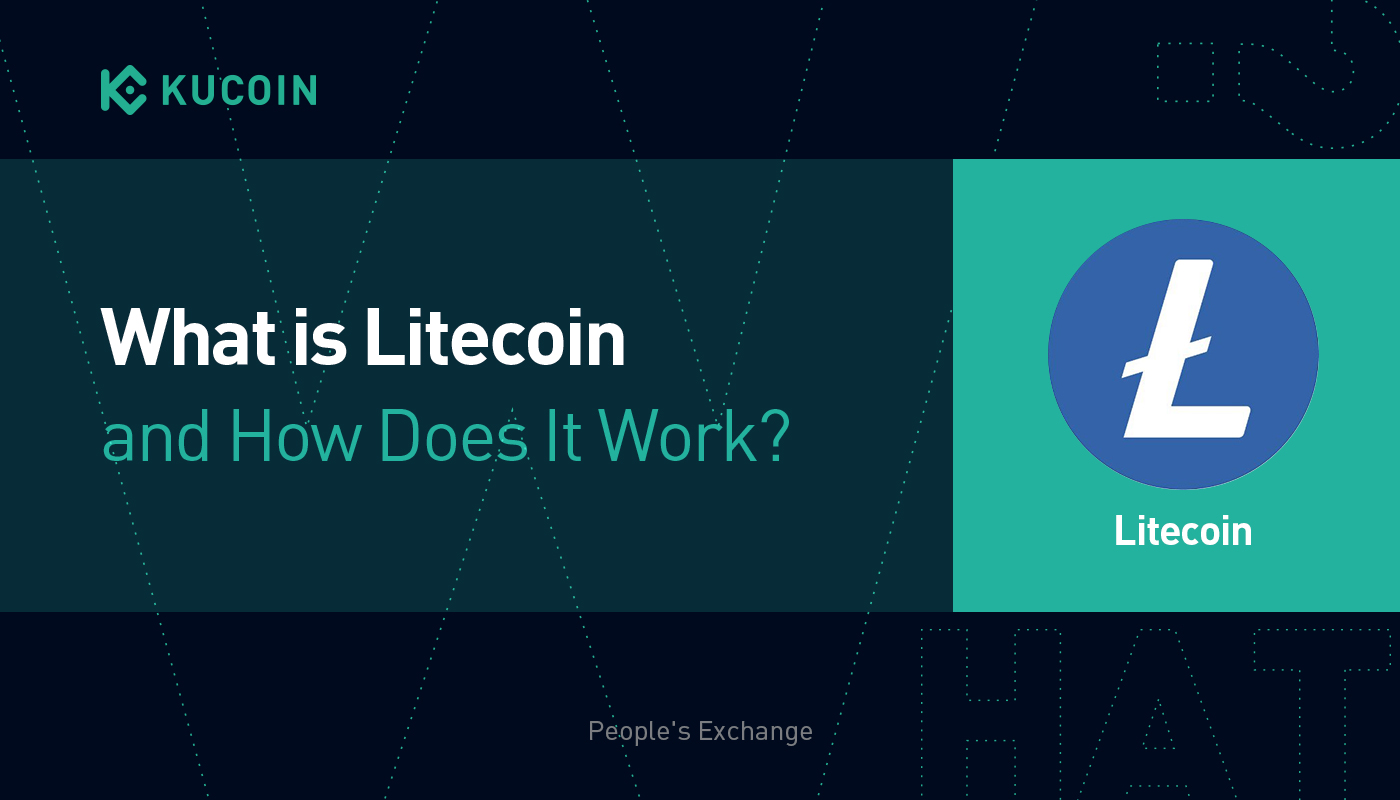What is Litecoin (LTC)? How does it work?
If you are in the crypto space for quite some time now, you might have heard the phrase 'Bitcoin is gold'. But do you know what the silver counterpart of Bitcoin is? Litecoin (LTC), or commonly referred to as the 'lite version of Bitcoin'.
Litecoin is one of the earliest altcoins in the market. It is often regarded as Bitcoin's little brother because it shares the original codebase of Bitcoin blockchain except for a few subtle differences in hashing algorithm, transaction throughput, and coin supply.

Who created Litecoin?
Litecoin was created back in 2011 by Charlie Lee, a software engineer at Google who later became the engineering director at Coinbase (2015-17) and is now serving as a managing director of the Litecoin Foundation.
The codebase that runs Litecoin is fully open-source under the MIT/X11 license since its inception. Although Litecoin uses Bitcoin's original codebase, it is technically not a 'fork' because it doesn't share the genesis block with Bitcoin.
How does Litecoin work?
Litecoin works the same way as Bitcoin but with a few key differences to improve speed and accessibility. Bitcoin has a 10 minutes block confirmation time, making it less suitable for smaller transactions due to low transaction throughput.
In comparison, Litecoin has a 2.5 minutes block confirmation time, making it four times faster than Bitcoin. It also uses a much efficient hashing algorithm called Scrypt, has the same block reward and halving mechanism, and comes with a total supply of 84 million LTC.
Consensus mechanism
Litecoin has a Proof-of-Work based consensus mechanism that features a unique hashing algorithm called Scrypt, which is memory-intensive and less complex than SHA-256 used in Bitcoin.
The motivation behind using Scrypt instead of the SHA-256 hashing algorithm was its ASIC resistant property. SHA-256 utilizes a lot of computing power, whereas Scrypt uses both computing power and memory, making it less compatible with ASIC machines.
The reasoning against ASIC-based mining is that it centralizes the mining operations with high infrastructure costs and economies of scale, making it difficult for smaller players to survive.
However, it didn't stop the chip manufacturers from designing ASIC machines that can do memory-intensive operations. As of today, almost all the Litecoin mining operations use Scrypt-based ASIC hardware.
Faster block confirmation times
Litecoin has an average block confirmation time of 2.5 minutes, which is four times faster than Bitcoin. Due to quick block confirmation times, Litecoin has a much better transaction throughput.
Block rewards for Litecoin follow the same pattern as Bitcoin, where the miners get 12.5 newly minted LTC per block. The Litecoin halving occurs every 840,000 blocks (approx. 4 years), and the block reward is reduced by 50% in the halving process.
In Bitcoin, halving occurs every 210,000 blocks, but since Litecoin is mining 4x more blocks at any given time, the number of blocks required for a halving period is also 4x greater than Bitcoin, but the time required is the same (roughly four years).
Coin Supply
Litecoin has a total coin supply of 84 million that follows the same trajectory as Bitcoin. For every Bitcoin block, Litecoin produces roughly four blocks. Together with the halving event that occurs every 840,000 blocks, the total supply for LTC equates to 84 million compared to Bitcoin's total supply of 21 million.
Development roadmap
Litecoin closely mirrors all the developments happening on Bitcoin. People often refer to Litecoin as the 'testnet' of Bitcoin because the proposed changes for Bitcoin Core go live on Litecoin first due to the smaller size of the network participants.
Litecoin was the first to add SegWit and cross-chain atomic swaps using Lightning Network. It simply takes a lot of the innovation from Bitcoin and follows the Bitcoin Core roadmap.
Lightning Support
Litecoin fully supports the Lightning Network after the SegWit upgrade. Lightning Network is a 'Layer-2' protocol that runs on top of the underlying protocol (Litecoin in this case), enabling blazing-fast transactions with low fees by using payment channels.
Lightning Network will be a game-changer for Litecoin, and it will help achieve a much larger scale needed for tiny day-to-day transactions. Aside from Lightning Network, many cross-chain protocols like Cardano and Swingby have added support for Litecoin through interconnected cross-chain bridges.
Supported by PayPal and Venmo
PayPal and Venmo, two of the largest payment aggregators, have recently added support for Bitcoin, Ethereum, Bitcoin Cash, and Litecoin. Millions of PayPal and Venmo customers can now use these cryptocurrencies right from their wallets, and Litecoin is one of them.
This interest from large and established payment aggregator companies is a significant breakthrough for Litecoin and its ecosystem.
Conclusion
While Bitcoin has grown naturally to become a store of value, Litecoin provides a more scalable and robust medium of exchange.
Bitcoin has probably the best community of developers and researchers working on improving the Bitcoin ecosystem. Litecoin inherits these additional perks from Bitcoin as it shares the original codebase and closely follows the Bitcoin development roadmap.
With all its features, strong fundamentals, and very close similarity to Bitcoin, Litecoin is undoubtedly one of the best altcoins currently on the market.
Visit us at KuCoin, where you can buy, trade, and learn more about Litecoin and other cryptocurrencies. If you’re a starter, here is a step-by-step guide on how to buy Litecoin (LTC).
Sign up with KuCoin, and start trading today!
Find the Next Crypto Gem on KuCoin!
Follow us on Twitter >>> https://twitter.com/kucoincom
Join us on Telegram >>> https://t.me/Kucoin_Exchange
Download KuCoin App >>>https://www.kucoin.com/download


